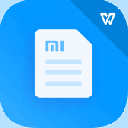





Electronics Devices & Circuits

คำอธิบายของElectronics Devices & Circuits
It is swipe based UI designed for electrical & electronics student to learn electronics devices & circuits . It almost cover all topics according to abroad syllabus which are given below
Chapter 1. Semiconductor device
1. Semiconductor device
2. Theory of P-N junction
3. Temperature dependence and break down characteristics
4. Junction capacitances
5. Zener Diode
6. Varactor diode
7. PIN diode
8. LED
9. Photo diode
10. Transistors BJT
11. Field-effect transistor
12. MOSFET
13. Common-emitter Amplifier
14. The Transistor Amplifier
Chapter 2. Feedback Amplifiers
1. Feedback amplifier
2. Negative Feedback Amplifier
3. Voltage-series
4. Voltage shunt
5. Current series and current shunt feedback
6. Sinusoidal oscillators
7. L-C (Hartley-Colpitts) oscillators
8. RC phase shift
9. Wien bridge
10. Crystal oscillators
11. Power Amplifiers
Chapter 3. Switching characteristics
1. Switching characteristics of diode and transistor
2. Multivibrators
3. Bistable Multivibrator
4. Astable multivibarators
5. Clippers and clampers
6. Differential amplifier
7. Darlington pair
8. Boot strapping technique
9. Cascade and cascode amplifier
Chapter 4. Operational amplifier
1. Operational amplifier characteristics
2. Bias Current
3. Inverting Amplifier
4. non inverting amplifier
5. Differential amplifier
6. Instrumentation Amplifier
7. Log and antilog amplifier
8. Voltage to current and current to voltage converters
9. Comparators Schmitt trigger
10. Active filters
11. 555 timer and its application
Chapter 5. Regulated power supplies
1. Regulated power supplies
2. Series and shunt regulators
3. Current limiting circuits
4. Introduction to IC voltage regulators
5. Fixed and adjustable switching regulators
6. Switching Regulators
7. SMPS
8. UPS
</div> <div jsname="WJz9Hc" style="display:none">มันถูกรูดตาม UI ที่ออกแบบมาสำหรับนักเรียนไฟฟ้าและอิเล็กทรอนิกส์ในการเรียนรู้อุปกรณ์อิเล็กทรอนิกส์และวงจร มันเกือบจะครอบคลุมทุกหัวข้อตามหลักสูตรในต่างประเทศที่ได้รับด้านล่าง
บทที่ 1 อุปกรณ์เซมิคอนดักเตอร์
1. อุปกรณ์เซมิคอนดักเตอร์
2. ทฤษฎีทางแยก P-N
3. การพึ่งพาอุณหภูมิและทำลายลงลักษณะ
4. capacitances Junction
5. ซีเนอร์ไดโอด
6. ไดโอด Varactor
7. ไดโอด PIN
8. LED
9. ภาพถ่ายไดโอด
10. ทรานซิสเตอร์ BJT
11. ทรานซิสเตอร์สนามผลกระทบ
12. MOSFET
13. เครื่องขยายเสียงสามัญ-อีซีแอล
14. ทรานซิสเตอร์เครื่องขยายเสียง
บทที่ 2 วงจรขยายข้อเสนอแนะ
1. เครื่องขยายเสียงตอบรับ
2. เครื่องขยายเสียงติชมเชิงลบ
3. แรงดันไฟฟ้าชุด
4. แรงดันปัด
5. ชุดปัจจุบันและข้อเสนอแนะปัดปัจจุบัน
6. oscillators ซายน์
7. L-C (ฮาร์ทลี่-Colpitts) oscillators
8. กะระยะ RC
9. สะพานวงเวียน
10. oscillators คริสตัล
11. เครื่องเสียง
บทที่ 3 ลักษณะการสลับ
1. การเปลี่ยนลักษณะของไดโอดและทรานซิสเตอร์
2. Multivibrators
3. bistable มัลติ
4. astable multivibarators
5. กรรไกรและ clampers
6. เครื่องขยายเสียงที่แตกต่างกัน
7. คู่ดาร์ลิงตัน
8. เทคนิครัดบูต
9. น้ำตกและเครื่องขยายเสียง cascode
บทที่ 4 การดำเนินงานเครื่องขยายเสียง
1. ลักษณะการดำเนินงานเครื่องขยายเสียง
2. กระแสไบแอส
3. Inverting Amplifier
4. เครื่องขยายเสียงไม่กลับหัว
5. เครื่องขยายเสียงที่แตกต่างกัน
6. การใช้เครื่องมือเครื่องขยายเสียง
7. เข้าสู่ระบบและเครื่องขยายเสียง antilog
8. แรงดันเป็นปัจจุบันและปัจจุบันเพื่อแปลงแรงดันไฟฟ้า
9. เทียบมิตทริกเกอร์
10. ตัวกรองที่ใช้งาน
11. 555 จับเวลาและการประยุกต์ใช้
บทที่ 5 การควบคุมอุปกรณ์ไฟฟ้า
1. การควบคุมอุปกรณ์ไฟฟ้า
2. Series และหน่วยงานกำกับดูแลปัด
3. วงจร จำกัด ปัจจุบัน
4. รู้เบื้องต้นเกี่ยวกับหน่วยงานกำกับดูแลแรงดันไอซี
5. หน่วยงานกำกับดูแลการเปลี่ยนคงที่และปรับ
6. ควบคุมการสลับเปลี่ยน
7. SMPS
8. ยูพีเอส</div> <div class="show-more-end">

























